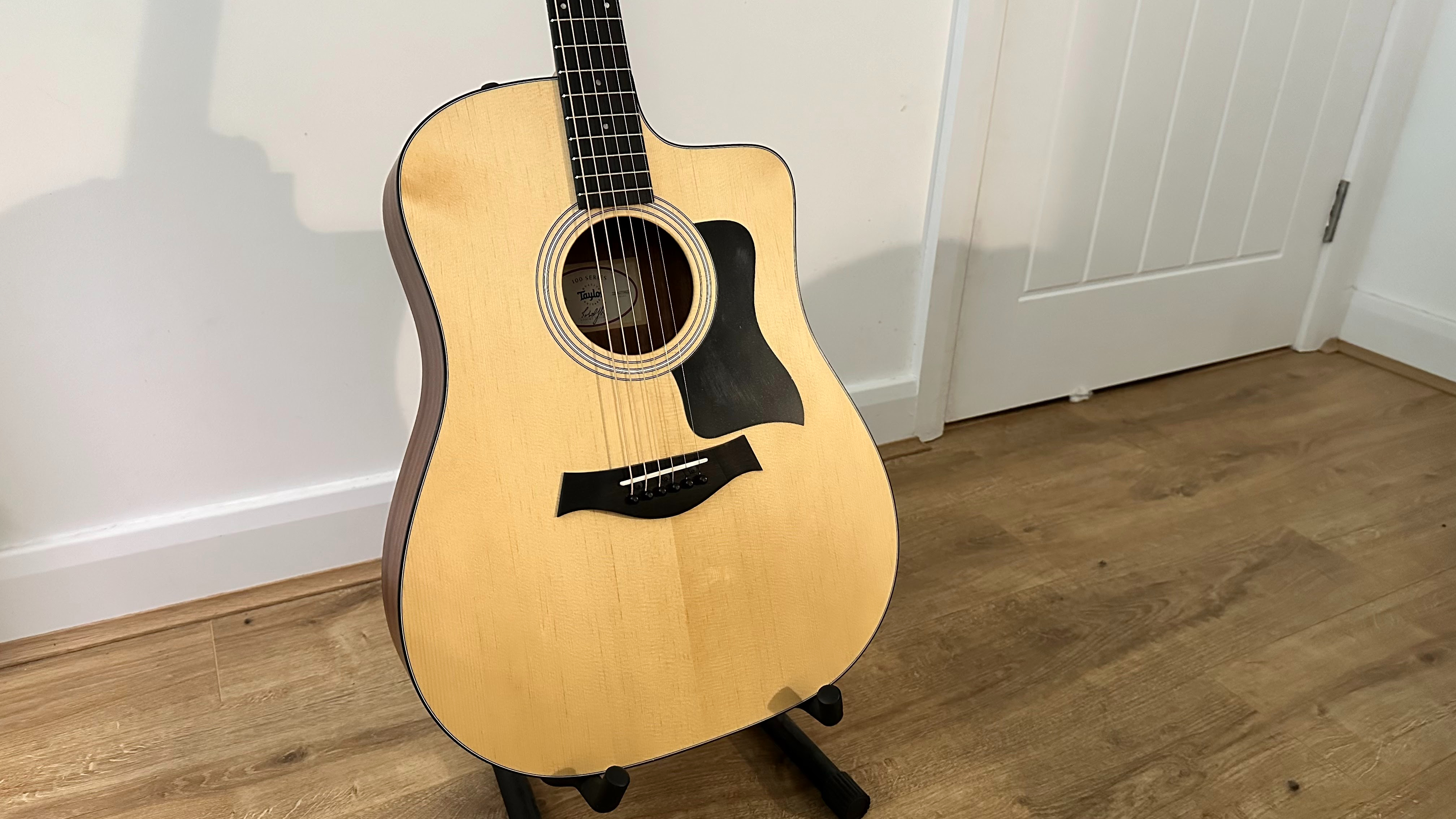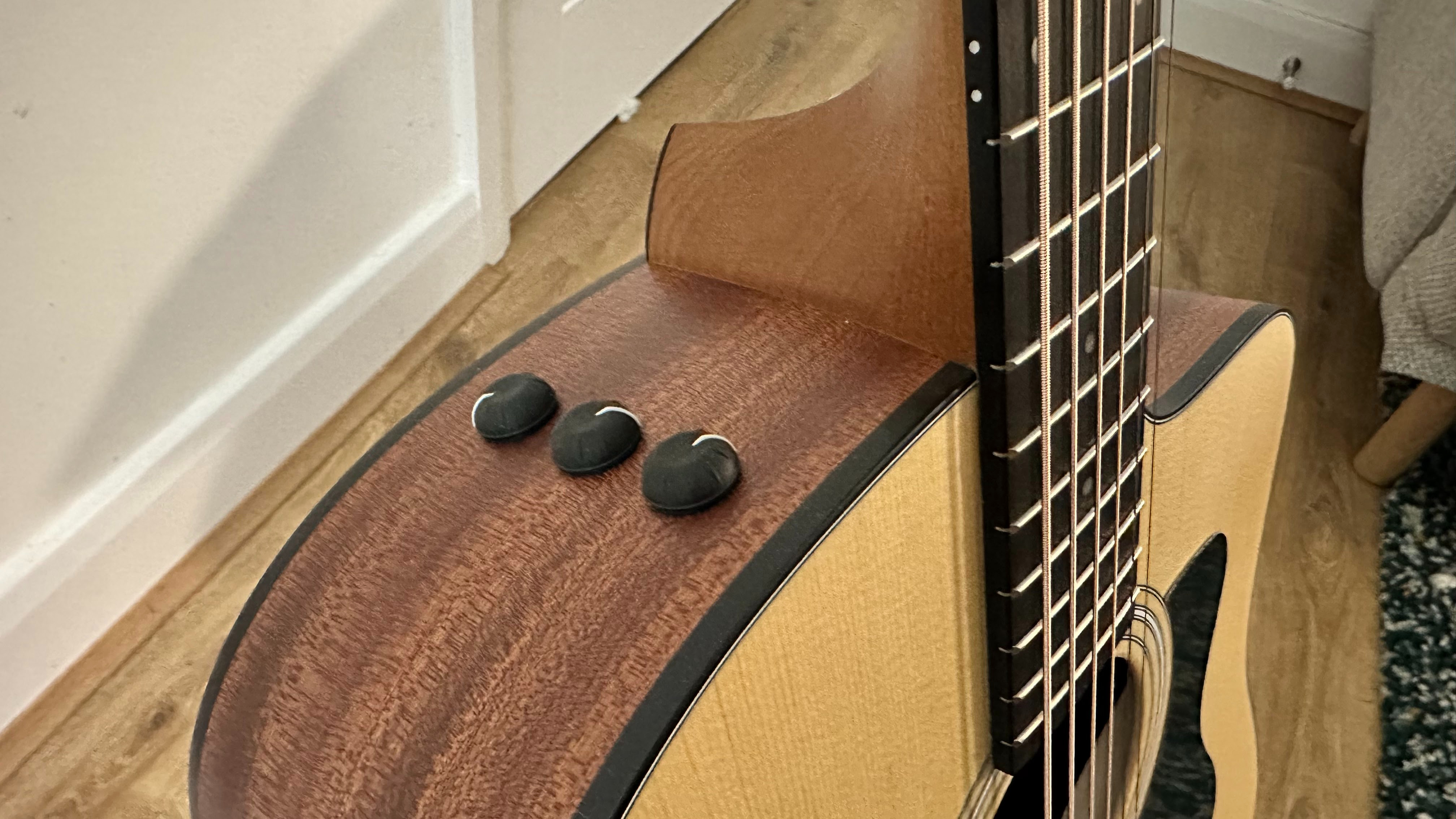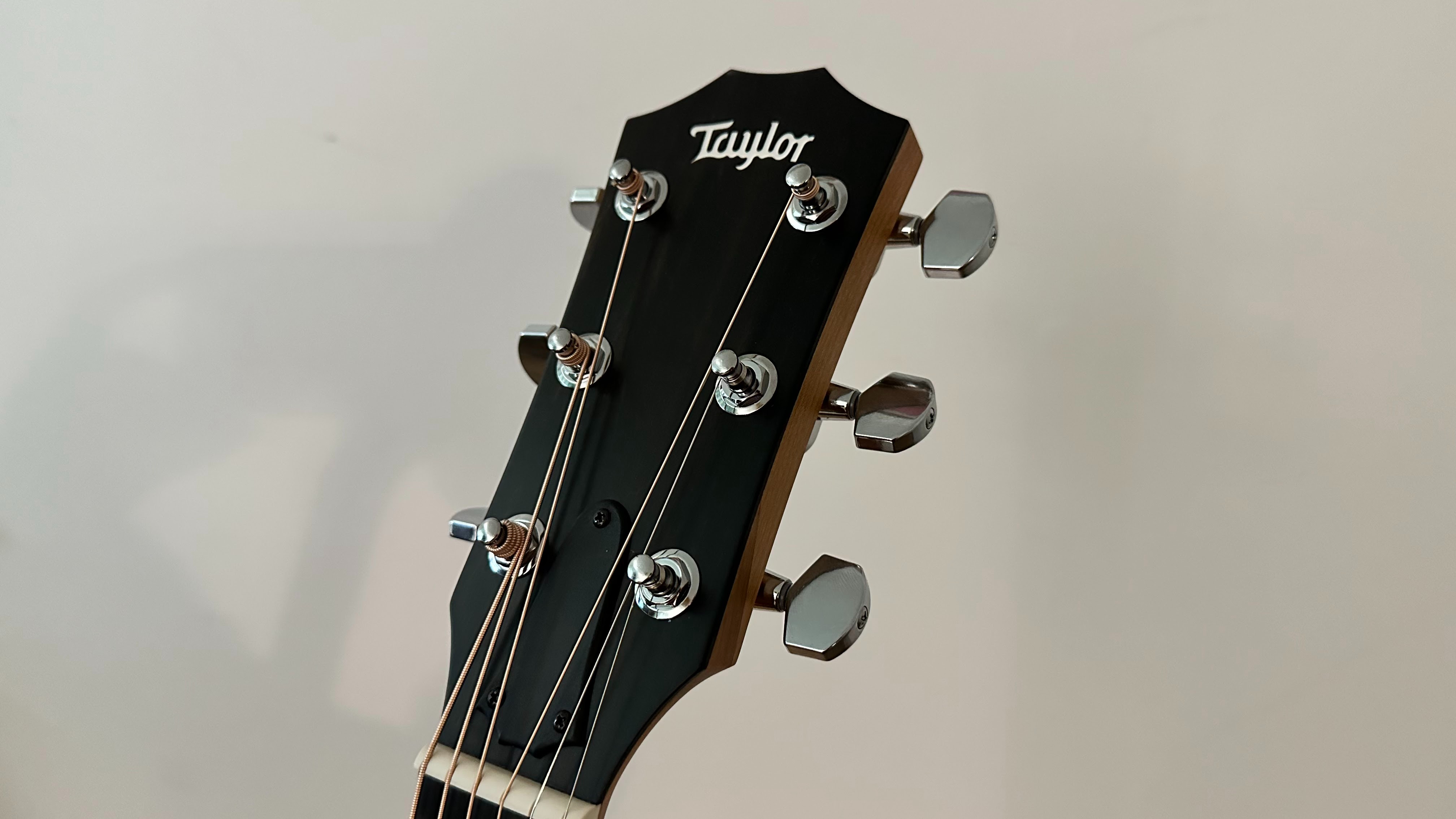
The Taylor 110e occupies an interesting niche in the acoustic guitar world. Too expensive to be a true beginner acoustic guitar, but not premium enough to tempt an experienced player with cash to burn, it could risk becoming a victim of its makers’ own illustrious name. Yet after spending some time with one, the benefits of choosing a ‘cheaper’ guitar from a big name - over a top-tier model from a less-respected brand - became abundantly clear.
Taylor, as we know, is acoustic guitar royalty and has the reputation it does for good reason. The 110e has all the hallmarks of a high quality instrument, from the finish and general levels of craftsmanship, through to a relatively high-spec electronic system. There were multiple occasions on testing the guitar when, compared to others in my collection, these little details became apparent. The feel of the body and neck woods, and the extra projection aided by Taylor’s bracing system in the body, for example.
It’s also, as a predominantly electric player, a neck that felt immediately comfortable; I never felt I was wrestling the 110e as I have at times with other acoustics.

After a quick setup - which is advised, especially post-purchase - I could immediately see, feel and hear this quality. The neck, for example, very quickly established itself as one of my favorite parts of this guitar. Its satin finish lent itself perfectly to playing up and down the fretboard with ease, while I found the overall finish and stylings of the body to be elegant and understated.
It’s also a versatile guitar, comfortable lending its voice to a variety of styles and genres. I had as much fun playing delicate fingerstyle numbers as I did thrashing out big open chords, and it responds well to both extremes.

The Sitka spruce dreadnought body provides plenty of projection, with a naturally balanced tonality throughout. Thicker string gauges can help bolster the low-end, as you’d expect, but I never felt it was lacking when using medium gauges. Regardless, there’s plenty of sparkle to be found when you’re playing more intricate picking parts without it ever becoming shrill or overbearing.
Plugged in, the 110e shows itself to be a highly capable guitar for live performance too. Three small rotary controls allow adjustment over bass, treble and volume, with a small bump at the center point of each to aid tweaks on darkened stages. At the same time, I found Taylor’s Expression System 2 electronics to offer enough tonally to be suitable for performance and recording. A quick close-mic recording session allowed the 110e’s natural sound to shine, requiring very little post-production.
Conclusion

So how has Taylor managed to produce what is, essentially, a high-end acoustic guitar for under $1k? The answer to this, aside from the fact it was made in Mexico unlike its higher-priced brothers, comes in the levels of opulence on offer.
Typically, elite acoustic guitars - like many others in the Taylor stable - will feature rare tonewoods or have pearlescent headstock markings and fret inlays, but there’s very little of that on display here.
Don’t let appearances fool you though. While the 110e has a decidedly no-frills appearance, this is a proper grown-up guitar; what you lose in ornate soundhole etchings and garish headstock designs, you gain in the areas that matter. Playability. Build quality. Sound. And that, for us, makes the Taylor 110e something of a bargain in 2024.
Specifications
- String Type: Steel
- Number of Strings: 6
- Body Shape: Dreadnought
- Back & Sides Wood: Walnut
- Top Wood: Sitka Spruce
- Finish: Satin Varnish
- Binding: Black
- Neck Wood: Maple
- Radius: 15"
- Fingerboard Material: West African Ebony
- Number of Frets: 20
- Scale Length: 25.5"
- Nut Width: 1.6875"
- Tuning Machines: Die-cast
- Electronics: ES-2
- Contact: Taylor Guitars







